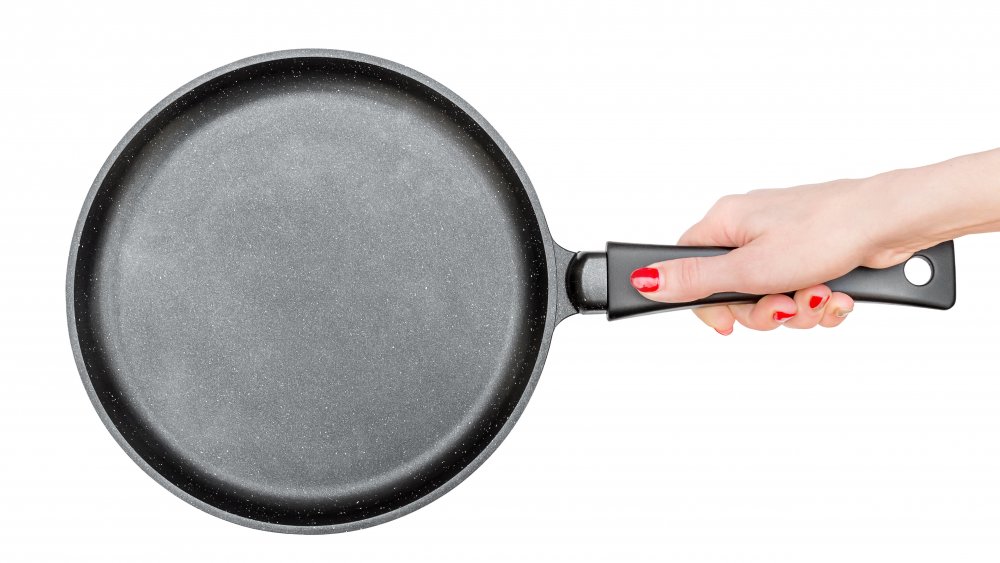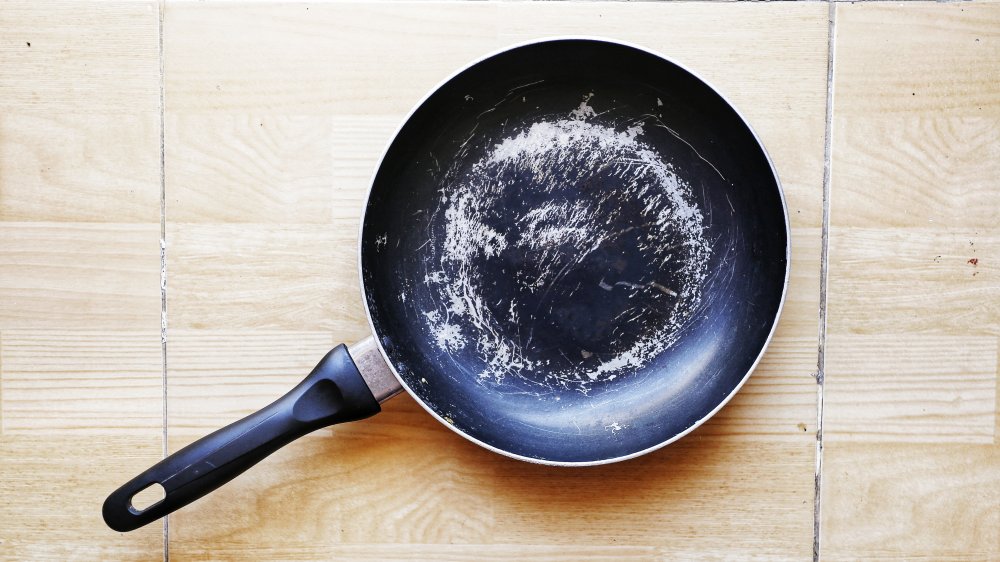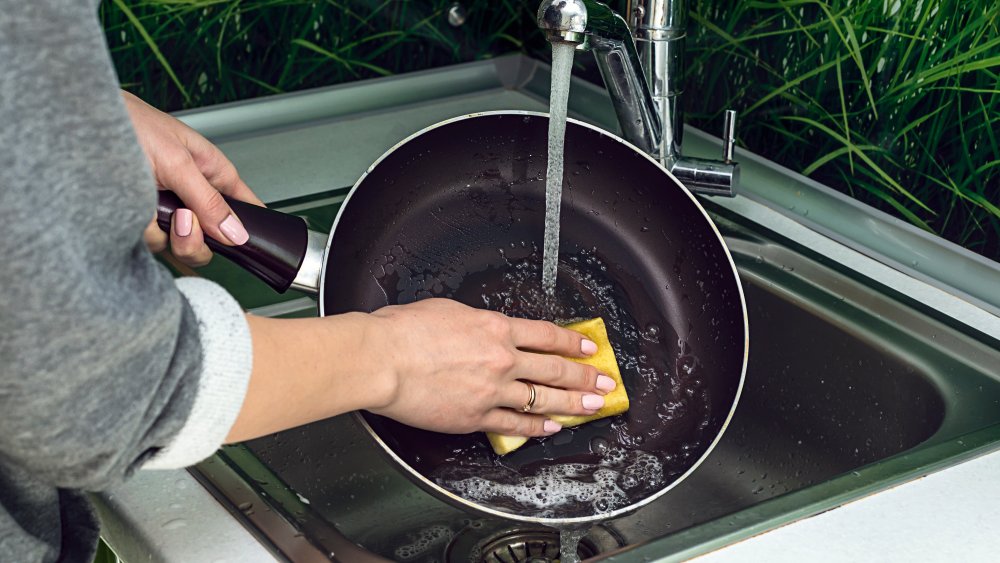The Reason Your Nonstick Pans Stick
Nonstick pans are certainly fantastic kitchen tools — nobody likes following up a good meal with scrubbing a dirty pot so vigorously that they break a sweat. But it seems like almost all nonstick pans eventually start to lose their nonstick factor and before you know it, you're busting out the heavy duty sponge to scrape off that gunk. The Teflon coating that makes nonstick pans so great isn't perfect, and there are likely a few culprits behind the downfall of your pan.
Before you go shopping for expensive new cookware, it's probably wise to find out why your nonstick pan are sticking so you can make sure you treat them better in the future.
Scratches compromise the nonstick surface of your pans
The advantage that nonstick pans have over traditional cookware is they're able to block food particles from sticking because of the Teflon surface. When a standard metal pan is heated up, its pores enlarge and food gets into those microscopic pores, solidifies, and sticks (via Fine Cooking). Cooking oils helps to act as a shield against food sticking to the metal, but nonstick pans come coated with an industrial shield already on the surface. This is what reduces food sticking to them without the need for much, if any, oil.
The use of metal cooking utensils, abrasive cleaners and scouring pads, or stacking pots and pans on top of one another will eventually scratch off the coating on your nonstick pan and those food particles will start sticking to the metal. Proper care, like using wooden or silicone utensils can help reduce these scratches, but what if your nonstick pan is already starting to stick? Can it be saved, or is it doomed for the landfill?
Time to bring those nonstick pans back from the grave
Rather than buying new cookware every couple of years, there are some things you can do to make sure your nonstick cookware lasts a little longer.
Quick and Dirty Tips recommends treating nonstick cookware that's suffered some scratching by mixing 1 cup water, 2 tablespoons baking soda, and 1/2 cup white vinegar. Pour the liquid into the cookware and boil it on the stove for around 10 minutes. Wash it out and then rub it with some vegetable oil. This should help repair the surface of your nonstick pan and reduce that stickiness.
Finally, if you store your cookware by stacking it, insert a paper plate between each piece so that the metal of the pot on top isn't scratching the surface of the pan under it.


